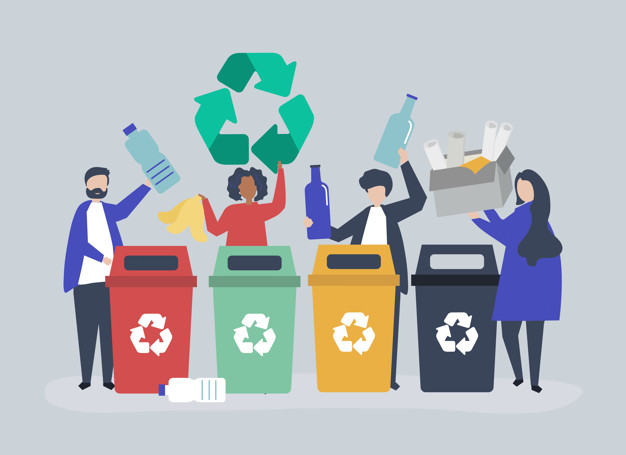
People are being encouraged to think about their use of recycled plastics in a way they never have before. Recent news stories have put sustainability firmly on the agenda, with focus on reducing landfill and preventing materials from polluting our oceans.
Responsibly produced plastics can be recycled effectively and efficiently, or used to generate energy from waste (EfW) at the end of their useful life. Most households and businesses put out their waste for recycling, but data suggests confusion remains about what can be recycled and how it should be separated to enable recycling. Latest figures from Defra indicate a 45% recycling rate for waste from households, with a target of 50% by 2020.
Contamination issues
Items can often end up in the incorrect bin. An everyday example of this is putting food waste in the same bag as dry recycling. Contamination can also occur when food containers which haven’t been properly cleaned are put in a dry recycling bag. Local authorities are looking hard at ways to increase or maintain recycling rates and tackle contamination issues, often with limited budgets.
Cost of contamination
Improving segregation at the point of disposal across all sectors – from hazardous waste in healthcare, to commercial and household recycling, will achieve a better outcome for all.
Poor segregation leads to increased costs of disposal for many business facilities and may even result in prosecution if the waste is ‘mixed’ and is deemed no longer suitable for the waste treatment or disposal option that has been selected. In healthcare settings, for instance, segregation onsite is vital to maintain compliance with clinical waste regulation.
Sustainable solutions
In one of our recent blogs we showed that suppliers have an important part to play to help ensure materials are segregated effectively. Sacks, bags and specialty products for the storage and collection of segregated waste must enable easy separation and limit the chance of contamination, whilst having the lowest environmental impact.
Buyers need to look out for independent, internationally-recognised quality standards such as EN13432. This way they’ll know that all the constituents and components of purchase, for example, their food caddy liner or green waste bin liners, will biodegrade and compost as expected within the normal 6-10 week cycle.
Working together
Over the next few months we’ll be at a number of events including the CIWM Resourcing The Future conference, LARAC Yorkshire and Humberside regional conference and RWM 2018, where we’ll be showcasing our products to help improve segregation at disposal and discussing how plastics can benefit the environment and improve resource efficiency.
Demand for plastic is set to continue to grow, and so too is innovation in collection, sorting and processing technologies to make all plastic packaging recyclable. A collaborative approach is essential which is why we’ve signed up to The UK Plastics Pact, which aims to capture the value of plastics material – keeping plastic in the economy and out of the oceans.